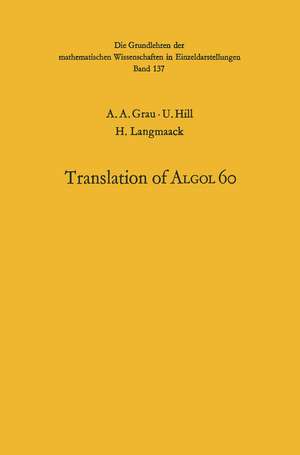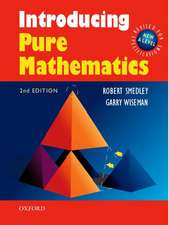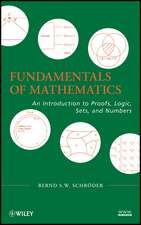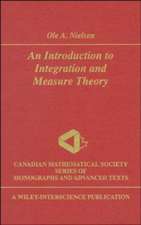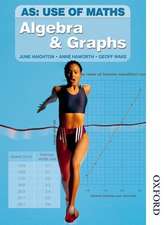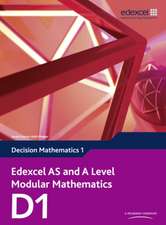Handbook for Automatic Computation: Volume I · Part b: Grundlehren der mathematischen Wissenschaften, cartea 137
Autor Albert A. Grau Editat de Friedrich L. Bauer Autor U. Hill Editat de Alston S. Householder Autor H. Langmaack Editat de K. Samelsonen Limba Engleză Paperback – 23 aug 2014
Din seria Grundlehren der mathematischen Wissenschaften
-
 Preț: 353.84 lei
Preț: 353.84 lei - 24%
 Preț: 728.15 lei
Preț: 728.15 lei -
 Preț: 410.22 lei
Preț: 410.22 lei - 24%
 Preț: 587.88 lei
Preț: 587.88 lei - 17%
 Preț: 498.74 lei
Preț: 498.74 lei -
 Preț: 592.77 lei
Preț: 592.77 lei - 20%
 Preț: 692.50 lei
Preț: 692.50 lei - 24%
 Preț: 893.31 lei
Preț: 893.31 lei - 20%
 Preț: 824.75 lei
Preț: 824.75 lei - 24%
 Preț: 632.98 lei
Preț: 632.98 lei - 15%
 Preț: 596.69 lei
Preț: 596.69 lei - 15%
 Preț: 714.49 lei
Preț: 714.49 lei -
 Preț: 333.03 lei
Preț: 333.03 lei - 15%
 Preț: 473.16 lei
Preț: 473.16 lei -
 Preț: 356.49 lei
Preț: 356.49 lei -
 Preț: 484.43 lei
Preț: 484.43 lei - 15%
 Preț: 452.79 lei
Preț: 452.79 lei -
 Preț: 456.66 lei
Preț: 456.66 lei - 15%
 Preț: 708.75 lei
Preț: 708.75 lei -
 Preț: 423.08 lei
Preț: 423.08 lei - 15%
 Preț: 444.29 lei
Preț: 444.29 lei - 15%
 Preț: 527.79 lei
Preț: 527.79 lei - 15%
 Preț: 589.65 lei
Preț: 589.65 lei -
 Preț: 353.40 lei
Preț: 353.40 lei - 18%
 Preț: 727.66 lei
Preț: 727.66 lei -
 Preț: 387.96 lei
Preț: 387.96 lei - 15%
 Preț: 454.74 lei
Preț: 454.74 lei - 15%
 Preț: 481.03 lei
Preț: 481.03 lei -
 Preț: 464.55 lei
Preț: 464.55 lei -
 Preț: 348.77 lei
Preț: 348.77 lei -
 Preț: 362.04 lei
Preț: 362.04 lei -
 Preț: 488.12 lei
Preț: 488.12 lei - 15%
 Preț: 447.57 lei
Preț: 447.57 lei -
 Preț: 419.81 lei
Preț: 419.81 lei -
 Preț: 388.52 lei
Preț: 388.52 lei -
 Preț: 419.21 lei
Preț: 419.21 lei - 15%
 Preț: 581.01 lei
Preț: 581.01 lei -
 Preț: 497.75 lei
Preț: 497.75 lei -
 Preț: 360.53 lei
Preț: 360.53 lei -
 Preț: 387.75 lei
Preț: 387.75 lei -
 Preț: 419.81 lei
Preț: 419.81 lei - 18%
 Preț: 725.75 lei
Preț: 725.75 lei -
 Preț: 453.78 lei
Preț: 453.78 lei -
 Preț: 386.39 lei
Preț: 386.39 lei
Preț: 395.09 lei
Nou
Puncte Express: 593
Preț estimativ în valută:
75.61€ • 82.10$ • 63.51£
75.61€ • 82.10$ • 63.51£
Carte tipărită la comandă
Livrare economică 22 aprilie-06 mai
Preluare comenzi: 021 569.72.76
Specificații
ISBN-13: 9783642869396
ISBN-10: 3642869394
Pagini: 416
Ilustrații: IX, 403 p.
Dimensiuni: 155 x 235 x 25 mm
Greutate: 0.58 kg
Ediția:Softcover reprint of the original 1st ed. 1967
Editura: Springer Berlin, Heidelberg
Colecția Springer
Seria Grundlehren der mathematischen Wissenschaften
Locul publicării:Berlin, Heidelberg, Germany
ISBN-10: 3642869394
Pagini: 416
Ilustrații: IX, 403 p.
Dimensiuni: 155 x 235 x 25 mm
Greutate: 0.58 kg
Ediția:Softcover reprint of the original 1st ed. 1967
Editura: Springer Berlin, Heidelberg
Colecția Springer
Seria Grundlehren der mathematischen Wissenschaften
Locul publicării:Berlin, Heidelberg, Germany
Public țintă
ResearchCuprins
1. Introduction.- 2. Principles of Algol translation.- 2.1. Basic linguistic definitions.- 2.2. The Backus normal form.- 2.3. The analyzing process.- 2.4. The method of the “Klammergebirge”.- 2.5. Recursive sequential methods and push down lists.- 2.6. Example for the use of two push down lists and of precedence rules.- 2.7. The concept of recursive translation.- 2.8. Organization of the translator.- 3. Languages involved in the translation process.- 3.1. Source language.- 3.2. Target language.- 3.3. Meta-language for describing the translator.- 4. Correspondence between elements of source and target language.- 4.1. Declarations in general.- 4.2. Declaration of variables and arrays and data storage allocation in the main program.- 4.3. Handling of types.- 4.4. Assignment statements.- 4.5. Boolean expressions.- 4.6. Conditional statements and expressions.- 4.7. For statements.- 4.8. Go to statement and switch declaration.- 4.9. Procedures and dynamic storage.- 4.10. Procedure calls and declarations.- 5. Recursive address calculation.- 5.1. Introduction.- 5.2. Assumptions necessary for the use of recursive address calculation.- 5.3. Use of recursive address calculation for one loop.- 5.4. Nested loops.- 5.5. Loops with more than one list element.- 5.6. Further optimization possibilities.- 6. Run time organization.- 6.1. The instruction storage allocation.- 6.2. The instruction procedure call.- 6.3. The instruction formal procedure call.- 6.4. The instruction normal procedure exit.- 6.5. The instruction jump to.- 6.6. The instruction formal procedure exit.- 6.7. The instructions name address and name call.- 6.8. The instruction name procedure exit.- 7. Model translator. Description.- 7.1. Introduction.- 7.2. Pass 1. The preparatory pass.- 7.3. Pass 2. Theimplementation of recursive address calculation.- 7.4. Pass 3. Decomposition and production of target program.- 7.5. Editorial functions.- 7.6. Run time system. The target language program interpreter.- 8. Algol 60 model translator. Formal part.- Pass 1: preparatory pass.- Pass 2: recursive address calculation pass.- Pass 3: decomposition and generation pass.- Check routine: check procedure calls and substitutions of formal parameters by actuals.- Check routine: check agreeability of actual parameter and specification.- Run time system: target language program interpreter.- START TRANSLATION.- Appendix: Correspondence matrix for actual and formal parameters.
